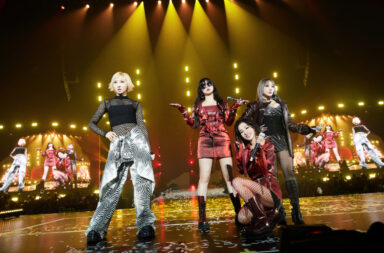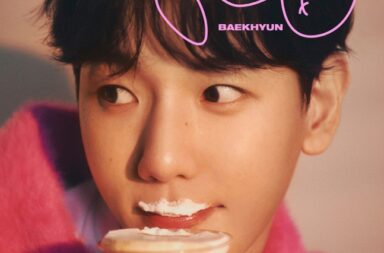Every year in March, the U.S., Australia, and the U.K. celebrate Women’s History Month. (If you’re in Canada, the celebration doesn’t come until October.) The month recognizes the achievements of women in both the past and present. The celebration coincides with International Women’s Day, which occurs on March 8. Though it is now April, we would still like to dedicate this edition of Music & Lyrics to the girl groups of K-pop past and present.
We begin our journey in the late 1990s. This specific time marks the beginning of what most would consider being “modern K-pop”. Following the success of Seo Taiji and the Boys in 1992, idol groups began to rise, changing Korean popular music forever. Also happening during this era are the openings of the Big Three – SM in 1995, YG 1996, and JYP 1997.
The top three girl groups at the time were Baby V.O.X, S.E.S, and fin.k.l, in order of debut. Although Baby V.O.X debuted first in June of 1997, S.E.S came behind only months later in November of the same year. S.E.S. released one of the biggest hits of the year with “I’m Your Girl”, off their debut album of the same name:
Hoping that you trust me, together with me
’cause I’m your girl hold me baby
Kept on seeing figures of your resemblance
Stay with me last forever
A R&B-inspired song that features Shinhwa’s Andy and Eric as rappers, “I’m Your Girl” is one of the first to tackle the “fairy idol” concept. The “fairy idol” concept plays off of innocence in the form of bubbly, often naïve lyrics, cute dance routines, and an immense display of the color white. The lyrics to “I’m Your Girl” fit perfectly with the “fairy idol” concept as they spark a sense of fun and enjoyment with the love interest. Other songs with “fairy idol” concepts from this era are Fin.K.L’s “To My Boyfriend” and Baby V.O.X’s “Ya Ya Ya”.
Fast-forward to the year 2005, and we find ourselves at the emergence of the second generation. A majority of the most notable girl groups from this generation begin to trickle in a few years later in 2007, but the period remains nevertheless. With heavy-hitters like SNSD, the Wonder Girls, and 2NE1, the second generation is when K-pop begins to gain traction across Asia and outside of South Korea. A number of these groups went on to become some of the biggest names in K-pop, with SNSD and 2NE1 being some of the most prominent examples.
Many hits came from second-generation girl groups, showing the impact of the period. Some of them include SNSD’s “Gee”, the Wonder Girls’ “Nobody”, Kara’s “Mister”, and T-ara’s “Roly Poly”. One song that particularly stood out was 2NE1’s “I Am the Best”:
You know everyone agrees that I’m pretty hot
I’m too good to be number two
While you follow behind, I only sprint facing the front
I fly over the table that you’re sitting on, I don’t careYou won’t be able to handle me once you touch me, I’m hot, hot, hot, hot, fire
Stop me before I flip out
“I Am the Best” takes on the “girl crush” concept. The “girl crush” concept is often depicted with women who have a confidence and style that other women can’t help but to admire. An ode to self-empowerment, “I Am the Best” oozes high-octane confidence with a hint of braggadocio meant to highlight individuality and boost personal morale. While not the first time 2NE1 has tackled the “girl crush” concept — that was achieved by their debut song “Fire” — “I Am the Best” is definitely one of the more well-known examples. It’s hard to find “girl crush” songs from around this time that aren’t by 2NE1, but similar songs include Sistar’s “So Cool” and SNSD’s “The Boys” (English version).
Up next is the third generation of K-pop, which begins around 2010 or 2011. While this particular generation is one of the shortest, it is also one of the fastest. This generation has a lot of experimentation, and 2012 saw the largest number of debuts. There’s a wide variety of genres evident in the music, including but not limited to pop, EDM, and hip-hop.
There’s a lot going on all at once during the third generation as everyone tries to find their niche that’ll bring success. Only a number of acts are able to make a name for themselves in order to continue a fruitful career beyond. One of those groups is A Pink, debut with the “fairy idol” concept and run with it for quite a while, as shown in “No No No”:
Don’t be sad no no no, You’re not alone no no no
You always became a light for me
Hold my hand, come and lean on me
I’ll always be your strength
“No No No”, similar to “I’m Your Girl”, is a complete package when it comes to the “fairy idol” concept. The song has quite the innocent vibe, and the lyrics are meant to spark a sense of inspiration or vitality into the person on the receiving end, presumed to be a male. You also have the white two-piece outfits that are arguably the most memorable for the era. In the modern K-pop era, A Pink has the “fairy idol” concept down to a perfected science. Other “fairy idol” songs from A Pink contemporaries are Girl’s Day’s “Hug Me Once” and Secret’s “Starlight Moonlight”.
The final stage in the history of K-pop girl groups lands us in the present time. Starting around 2014 or 2015, the fourth generation of Korean pop culture flourishes worldwide. With the help of mediums like YouTube and Twitter, the genre continues to gain momentum with fans around the world. In terms of girl groups, members of the fourth generation include the likes of G-Friend, Red Velvet, and Black Pink.
The title of flagship girl group for the fourth generation, however, goes to Twice. Over the past two years, the girls have taken the industry by storm through sales and appeal. In April of 2016, Twice released the ever so bubbly “Cheer Up”, which would go to become one of the biggest hits of the year:
CHEER UP BABYCHEER UP BABYGive it a little moreA girl shouldn’t give her heart away so easilyThat will make you want me moreI’ll pretend like I don’t careSo you don’t notice my feelings for youjust get it together and then babyCHEER UP
It’s hard to pinpoint what exactly Twice’s concept is, which is indicative of the fun-loving but also elaborate generation it comes from. While “Cheer Up” may appear to be a cutesy song due to its bubbly nature, it’s not exactly that. They’ve also never experimented with a sexy or powerful concept either. It’s both unique and slightly complex. While it’s hard to put an exact name or label to Twice’s concept, you could definitely describe it as energetic and bright. Other songs with a similarly energetic but somewhat complex nature are G-Friend’s “Navillera” and Red Velvet’s “Russian Roulette”.
While the history of K-pop can be winding and complex, it provides more insight into the genre. Girl groups have been a tour de force in the industry, and you can see how much they’ve evolved through the years. Girl groups have added many dimensions to K-pop, and it’s hard to imagine that it would be the same without them.
So, readers, who are your favorite girl groups? What are some of your favorite songs? Let us know in the comments below.
(Sources: YouTube[1][2][3][4], jpopasia, Pop!gasa, ColorCoded Lyrics [1] [2], Images via National Hispanic Cultural Center, JYP Entertainment)


